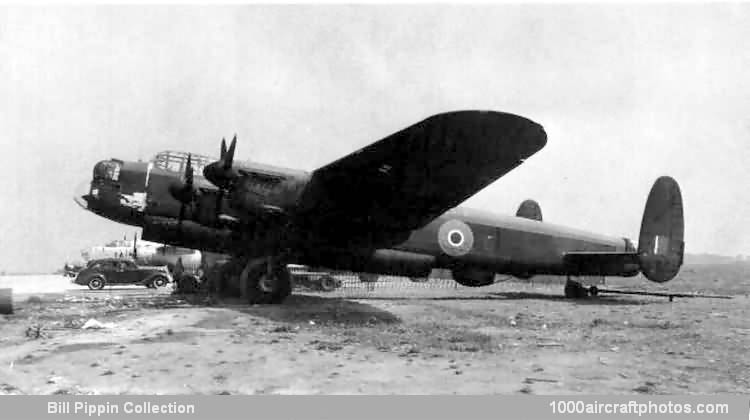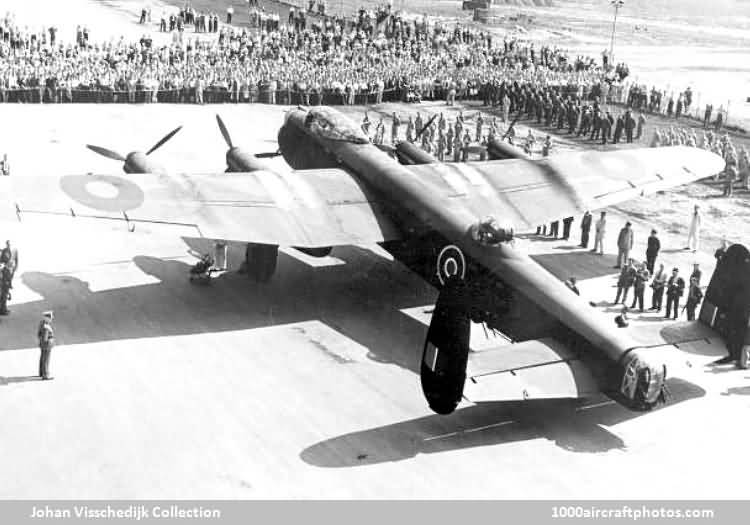02/28/2010. Remarks by Johan Visschedijk: "On September 18, 1941 a decision was made to build Lancasters in Canada and the Aircraft Division of National Steel Car at Malton, Ontario received an order in December, drawings started arriving in January and a Lancaster B.Mk.I (s/n R5727) was delivered as a pattern aircraft on August 24 1942. The aircraft plant was expropriated by the Canadian Government and renamed Victory Aircraft Ltd on November 4, 1942. Subcontractors were Ottawa Car & Aircraft Ltd., Ottawa, Ontario, Canadian General Electric Co. Ltd., Toronto, and Fleet Aircraft at Fort Erie.
The Lancaster B.Mk.X was designed around the bomb-floor which supported the bomb load and, incidentally, served as a floor for the crew. Structurally the Lancaster was a stressed-skin all-metal monoplane apart from the fabric covered elevators and ailerons,and wooden doors, hatches, and leading edge of the fins.
The aircraft were fitted with four 1,620 hp Rolls-Royce Merlin 224 twelve-cylinder liquid cooled in-line V-engines (license-built by Packard in the USA) and armament consisted of twin 0.303 in (7.7 mm) machine guns in the front, top, belly and rear Frazer-Nash turrets. It carried an 8,000 lb (3,632 kg) bomb load in an unobstructed 33 ft (10.06 m) long bomb bay. After some 150 aircraft were produced the upper armament was replaced by twin 0.50 in (12.7 mm) machine guns in a Martin CE-250 turret, the belly turret was deleted, and a H2S radar was installed.

